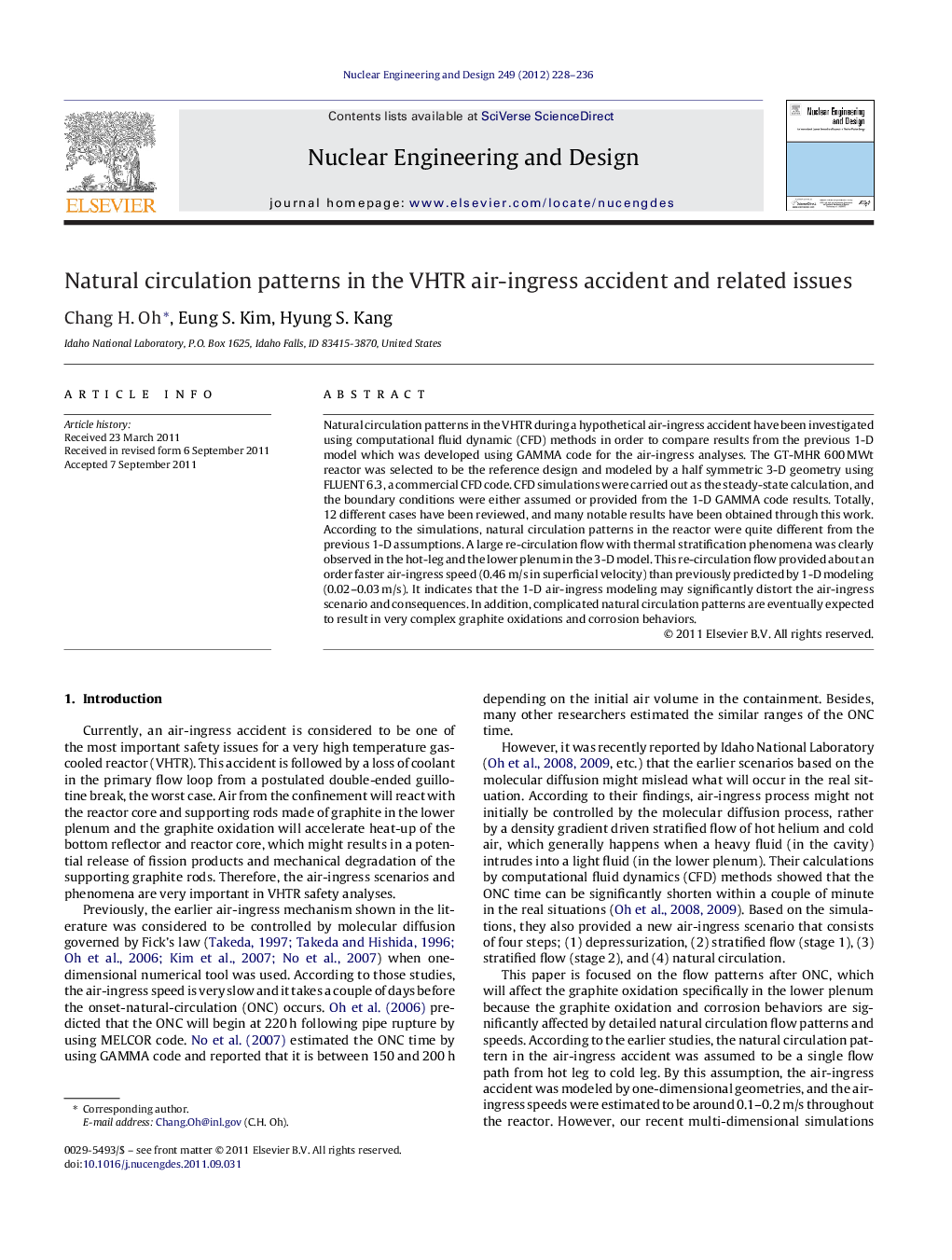| کد مقاله | کد نشریه | سال انتشار | مقاله انگلیسی | نسخه تمام متن |
|---|---|---|---|---|
| 297184 | 511750 | 2012 | 9 صفحه PDF | دانلود رایگان |

Natural circulation patterns in the VHTR during a hypothetical air-ingress accident have been investigated using computational fluid dynamic (CFD) methods in order to compare results from the previous 1-D model which was developed using GAMMA code for the air-ingress analyses. The GT-MHR 600 MWt reactor was selected to be the reference design and modeled by a half symmetric 3-D geometry using FLUENT 6.3, a commercial CFD code. CFD simulations were carried out as the steady-state calculation, and the boundary conditions were either assumed or provided from the 1-D GAMMA code results. Totally, 12 different cases have been reviewed, and many notable results have been obtained through this work. According to the simulations, natural circulation patterns in the reactor were quite different from the previous 1-D assumptions. A large re-circulation flow with thermal stratification phenomena was clearly observed in the hot-leg and the lower plenum in the 3-D model. This re-circulation flow provided about an order faster air-ingress speed (0.46 m/s in superficial velocity) than previously predicted by 1-D modeling (0.02–0.03 m/s). It indicates that the 1-D air-ingress modeling may significantly distort the air-ingress scenario and consequences. In addition, complicated natural circulation patterns are eventually expected to result in very complex graphite oxidations and corrosion behaviors.
► Natural circulation patterns were first investigated for post-onset-natural-circulation in VHTR air-ingress accident using computational fluid dynamic methods.
► This study showed that previous 1-D modeling cannot capture important phenomena in the air-ingress accident.
► This study revealed that density gradient driven stratified flow still plays important roles in the air-ingress consequences even after onset-natural circulation.
Journal: Nuclear Engineering and Design - Volume 249, August 2012, Pages 228–236